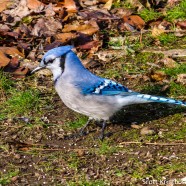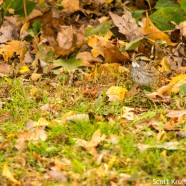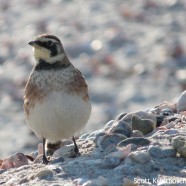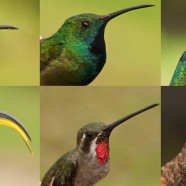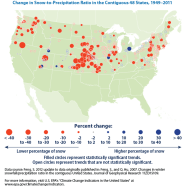Blue Jay (Cyanocitta cristata)
I feel as if I am still being constantly reminded of the many Blue Jays (Cyanocitta cristata) around with acorns crunching under my feet and calls of busy birds screeching out of yards, parks, and woodlands. They can look so vibrantly blue on sunny days, but that color is caused by sunlight being scattered by specialized cells in their feather barbs. Yep, the Blue Jay has no blue pigment! Scott Kruitbosch Conservation & Outreach Coordinator
Read MoreWhite-throated Sparrow (Zonotrichia albicollis)
If you feed birds at home in the east it is extremely likely you have White-throated Sparrows (Zonotrichia albicollis) hanging out in your yard. They primarily scratch at and feed on seed on the ground. What struck me about this bird was how it was camouflaged so well with the earth and the fallen leaves. The oft seen species never appeared that way to me before even though all sparrows are mostly brown for a reason (life on the ground!), and I thought it was smart how well designed it was for feeding on the edge of woodlands like this one was. Scott Kruitbosch Conservation & Outreach...
Read MoreHorned Lark (Eremophila alpestris)
The Horned Lark (Eremophila alpestris) is a species of open areas – the tundra, grasslands, fields, beaches and dunes and even the desert. Unsurprisingly they feed on the ground on insects and seeds and often take advantage of human activity disturbing areas such as mowed airports or piles of plowed earth or snow that expose more food. When it comes to the winter you will find them wherever it is the most bare. You can frequently spot them with Snow Buntings and, more rarely, the Lapland Longspur. They are also another species decreasing across much of their range and are listed as...
Read MoreHappy Earth Day!
Happy Earth Day! RTPI Affiliate Sean Graesser decided that since Google was using a hummingbird to represent Earth Day he’d do the same with this quick composite of a few of the species he worked with this year thus far.
Read MoreWinter: it’s cold and snowy
Yes, it is true – you may be fascinated to learn that in the winter season it is often both cold and snowy. Frozen precipitation can fall from the sky in great amounts when the temperature goes below freezing in many areas and this has been going on for quite some time. In fact much of the United States can have these conditions occur frequently, especially in the months of December, January and February. Huh? My sarcasm is in response to a week of nonstop climate change denial because it’s cold in the winter. We had a snowstorm that moved across much of the populated...
Read More



